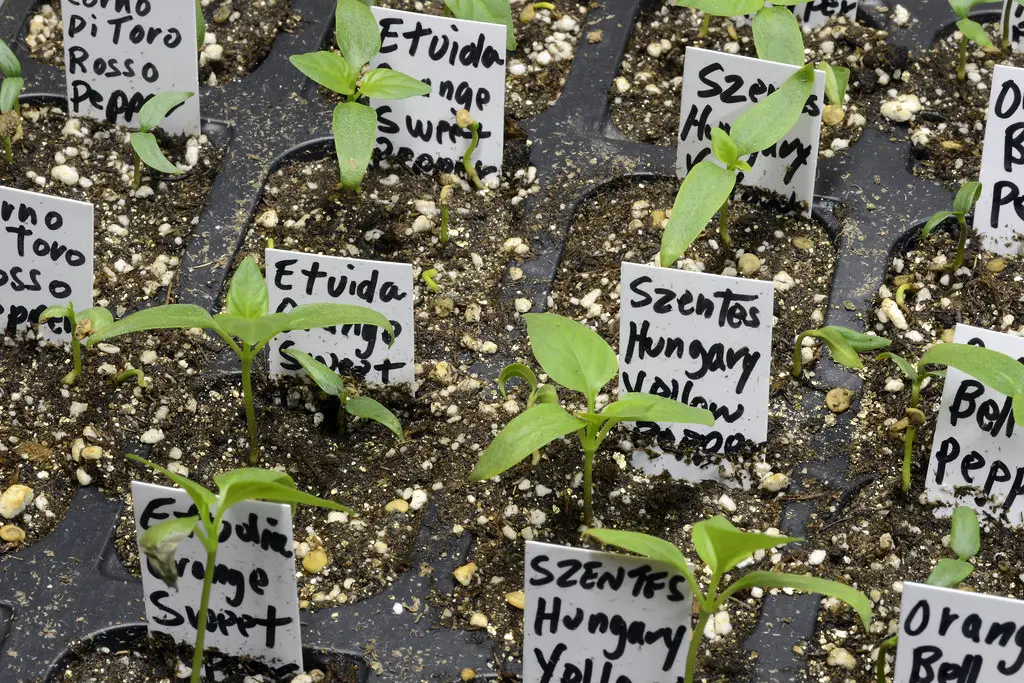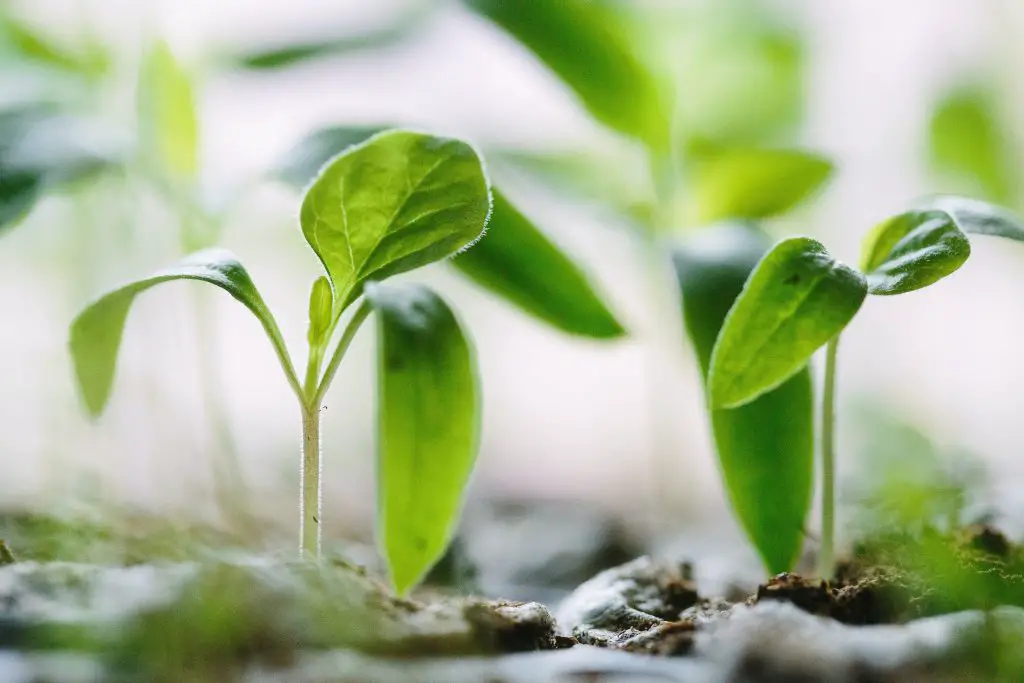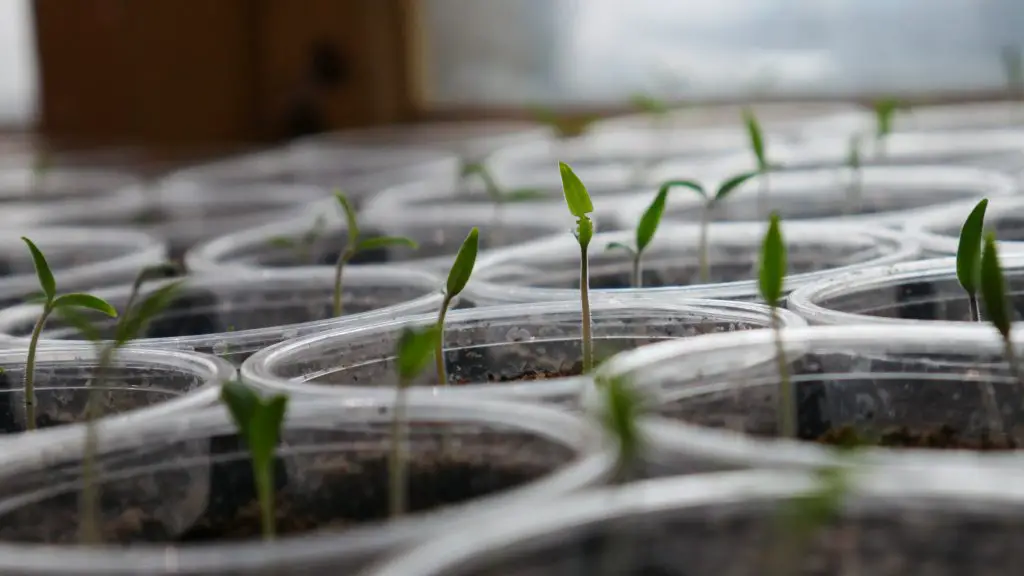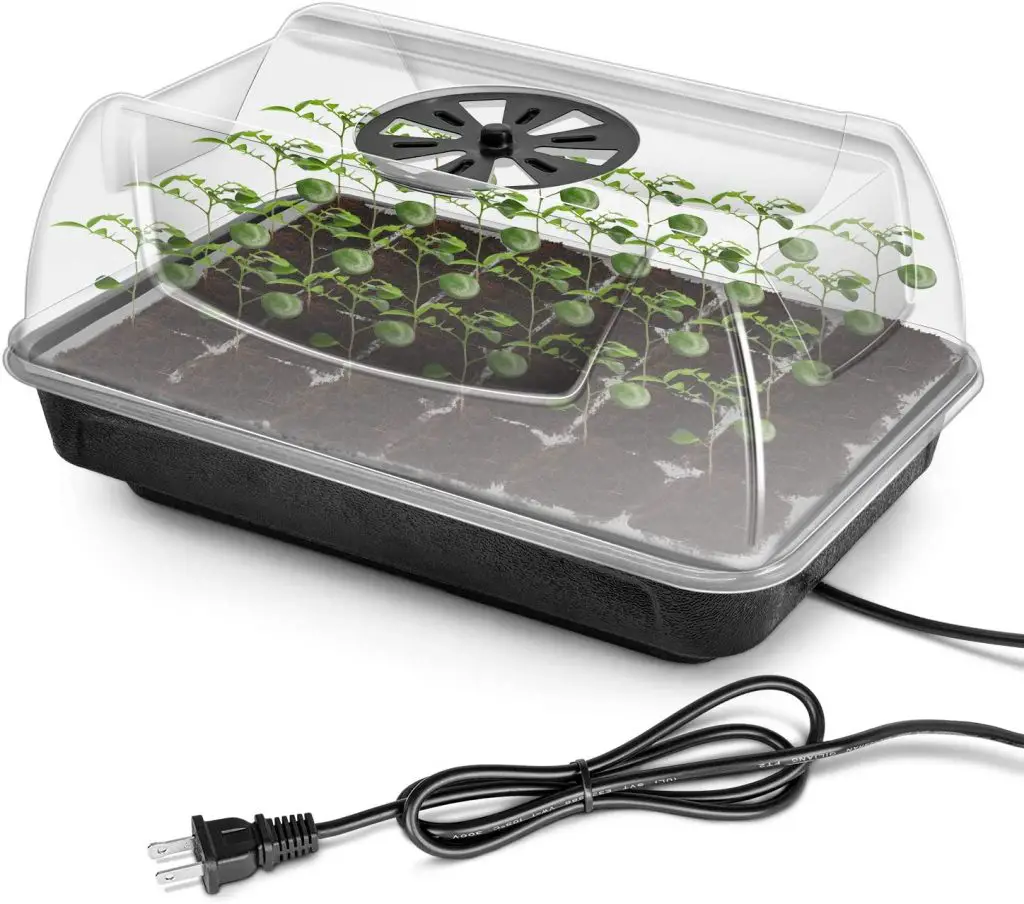Do You Need A Humidity Dome For Growing Seeds? Most gardeners will, at some stage, plant seeds into a seed tray just to get their annual crops or ornamentals going. However, to do this many people use a seed propagator is specifically designed for inside the house when it is a little bit cooler and most of these contain the humidity dome. If you haven’t purchased a seed propagator kit can you get away with just using a regular seed tray without a humidity dome?
When growing seeds in a humidity dome it is not absolutely essential as seeds will germinate provided there is enough moisture and the temperature is sufficiently warm. However, a humidity dome is highly recommended because it plays an important role in maintaining a constant temperature and humid environment around the plants which ensures that the plants do not dry out as easily.
This is particularly the case when the seed tray is stored indoors in a relatively warm location near a heater or in cases where a heated propagation tray is used. The reason for this is that there is a localized source of heat applied to the seed tray much of the moisture in the soil will become airborne creating a humid environment. The humidity dome traps heat and moisture around the seedlings to ensure that the conditions are ideal for rapid seed growth.

Will Humidity Domes Create Mold?
Mold growth can become a problem in humidity domes if the humidity levels are allowed to remain too high for too long. However, adjusting the conditions within the humidity dome is relatively easy as the vast majority of humidity domes have vents within them that can be used to adjust humidity level by opening or closing them.
To avoid excessive levels of moisture in the air generally, we recommend that you place the humidity dome over the newly planted seedlings with the vents shut for the first 24 hours which will encourage the creation of a humid environment however once that environment has been established the vents can then be open to reduce the humidity levels somewhat to avoid conditions in which mold or moss can thrive.
What To Do When Mold Appears?
While mold is not an ideal thing to happen to seedlings is also not the end of the world and can be easily fixed if it does occur. Mold will most commonly appear on the soil first as a white fuzzy substance this can be removed manually by using either an icy pole stick or something of that nature to scrape the surface mold away from the plant.

However, the formation of mold is also an indication that the conditions are too humid within your humidity dome. To change the conditions start by reducing the amount of watering that you’re doing to the seedlings and open the vents on the humidity dome as wide as possible.
In terms of water, we generally recommend that you mist the seedlings every couple of days with a sprayer rather than watering with a watering can which will generally apply larger amounts of water.
The other method that is commonly used to reduce mold is to use a fungicide to retard the formation of mold once it appears. This can be done by using a dilute solution of hydrogen peroxide at a level of approximately 3%. This solution can be sprayed across the seed tray to kill off any mold that cannot be removed manually, however, it is important to recognize that the solution must be dilute otherwise it will damage your plants.
Is It Worth Purchasing A Heated Propagation Tray?
One of the other common questions that is asked is is it worth purchasing a heated propagation tray which are generally more expensive. Heated propagation trays are extremely useful particularly if you live in a location that has relatively cold winters and you want to get your seedlings going in the early part of the season.
The main benefit of a heated seed tray is that the conditions within the seed tray in terms of temperature are far more consistent than if you merely place the seed tray inside your house. This is because the conditions within your house, particularly at night, will change depending on the level of heating that is applied through the night and there is a danger that temperature can fall to a level which will retarded the rate of germination.
The extent to which this occurs is largely dependent upon the specific nature of the seed that you are growing as some seeds will not germinate in cool conditions, these include things like peppers and eggplants and to a lesser degree tomatoes. However, if you’re growing something like onions which can germinate at close to freezing conditions then it is unlikely to be a huge issue.
So if you are wanting to grow these types of plants then a heated seed propagation tray will make a significant difference in the amount of fruit that you can produce in your garden as you can get the seeds going faster earlier in the season. If you were considering purchasing a heated seed propagation tray it is important to purchase one that has a removable seed tray to maximize the life of the unit as this is the part that will deteriorate first. To see the latest price on Amazon for a heated seed tray click on the link below.
How To Make The Most Of Your Propagation Space
As purchasing seed trays with humidity domes is more expensive it is important to ensure that you make the most of the available space that you have. To do this we have a few tips that will help make the best use of this resource.
Tip 1: Only use seed trays with humidity Dome for plants that require heat to germinate which could include things like pumpkin, zucchini, tomatoes, eggplants, and peppers.
Tip 2: Make sure that you sow more than one seed per cell to ensure that you get at least one saving coming up in every single cell.
Tip 3: Once seedlings have germinated they can be transferred out of the seed tray to allow additional plants to be germinated.
Tip 4: Consider creating homemade humidity domes increase the size of your propagation space.

How To Create A Homemade Humidity Dome
Creating your own humidity dome at home can be done using household items such as cling wrap and old wire coat hangers. The old wire coat hangers can be cut up and bent around the base of the seed tray to produce a frame which can then be used to support the application of cling wrap around the seed tray.
However, to make sure that this construction is reusable it is best to build the structure around a solid flat tray that can have the modular tray placed within them which means that you can pull a seed tray in and out of the humidity dome without having to reconstruct it each and every time.
The other method that is even simpler is to use old plastic containers and simply place a layer of cling wrap across the surface of the container. However, the limitation of this is that once plants get to any reasonable size the cling wrap needs to be removed.
I hope you found this article useful and have great success growing your seedlings at home in seed trays if you have any additional comments or questions please leave them in the section below.
Feature Article: “Passiflora Seedling” by BlueRidgeKitties is licensed under CC BY-NC-SA 2.0.
Relevant Articles
Germinating Seeds In Paper Towel Vs Soil: What Are The Benefits?
How Many Seeds To Plant In One Hole? Is It Better To Plant More Than One?
Do You Have To Use Seed Starting Mix?
What Are The Advantages Of Hybrid Seeds Over Open Pollinated Seeds?

